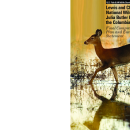What We Do
Refuges strive for biological integrity, diversity and environmental health. Much of the management work of refuges is to maintain, enhance or restore intact and self-sustaining habitats and wildlife populations that existed during historic conditions.
To help plants and wildlife, refuge staff uses a variety of habitat management techniques to maintain, recover or enhance plant and wildlife values. Refuge staff carefully considers any management techniques and employ them in varying degrees according to the situation.
Management and Conservation
Conservation efforts are guided and directed by the refuge's Comprehensive Conservation Plan which was approved in 2010. Goals include:
- Provide short-grass fields for the benefit of Columbian white-tailed deer, dusky Canada geese, and other grassland dependent wildlife.
- Restore and maintain riparian riparian
Definition of riparian habitat or riparian areas.
Learn more about riparian forests with diverse age and structural features characteristic of the historic lower Columbia River. - Restore and maintain non-tidal wetlands and sloughs as a mosaic with other refuge habitat types, especially riparian forest and short-grass fields.
- Maintain and protect tidally influenced freshwater wetlands and swamp habitats characteristic of the historic lower Columbia River.
- Maintain a healthy, sustainable population of endangered Columbian white-tailed deer to promote the recovery of this species....
- Provide and encourage establishment of aquatic habitat conditions that benefit salmonids and other native aquatic species of the lower Columbia River.

